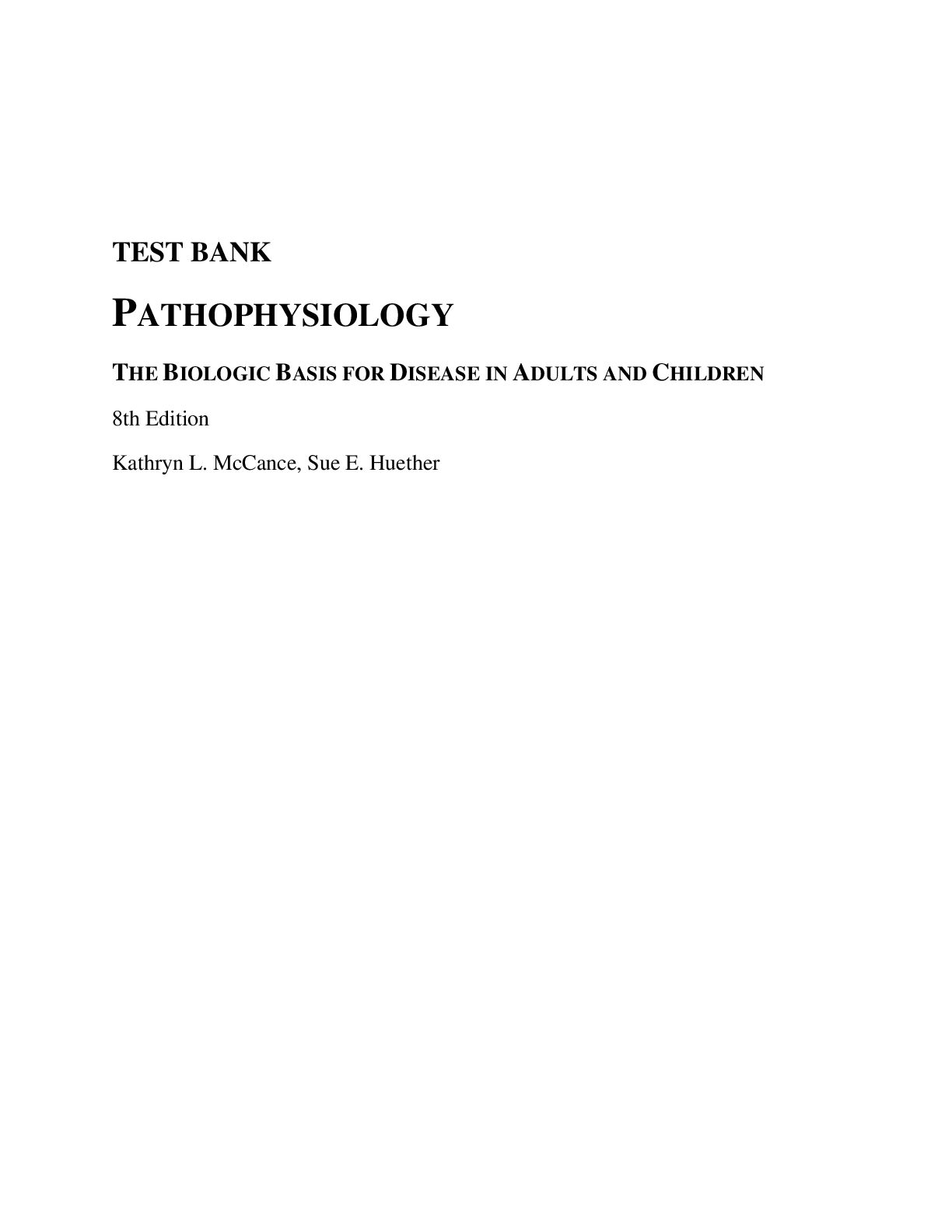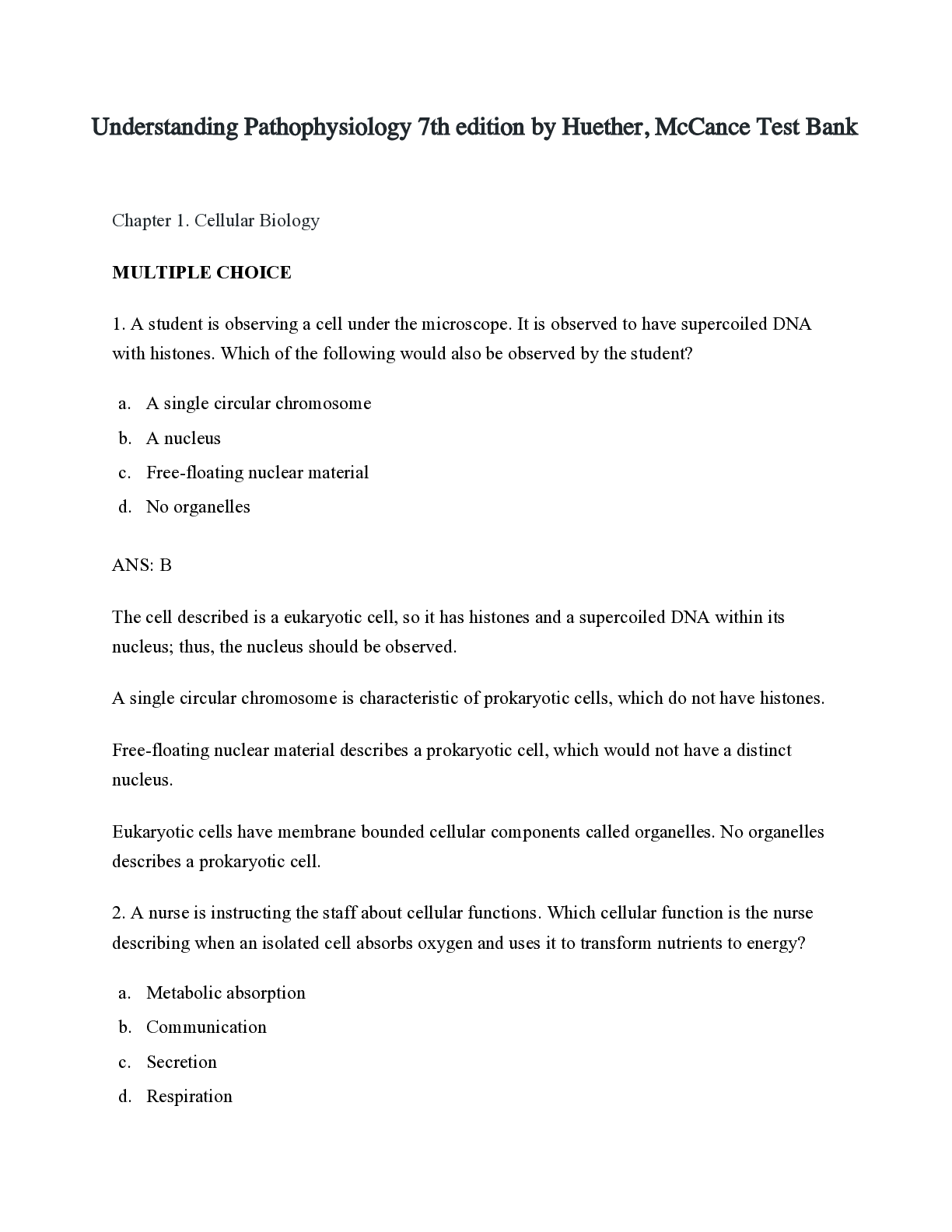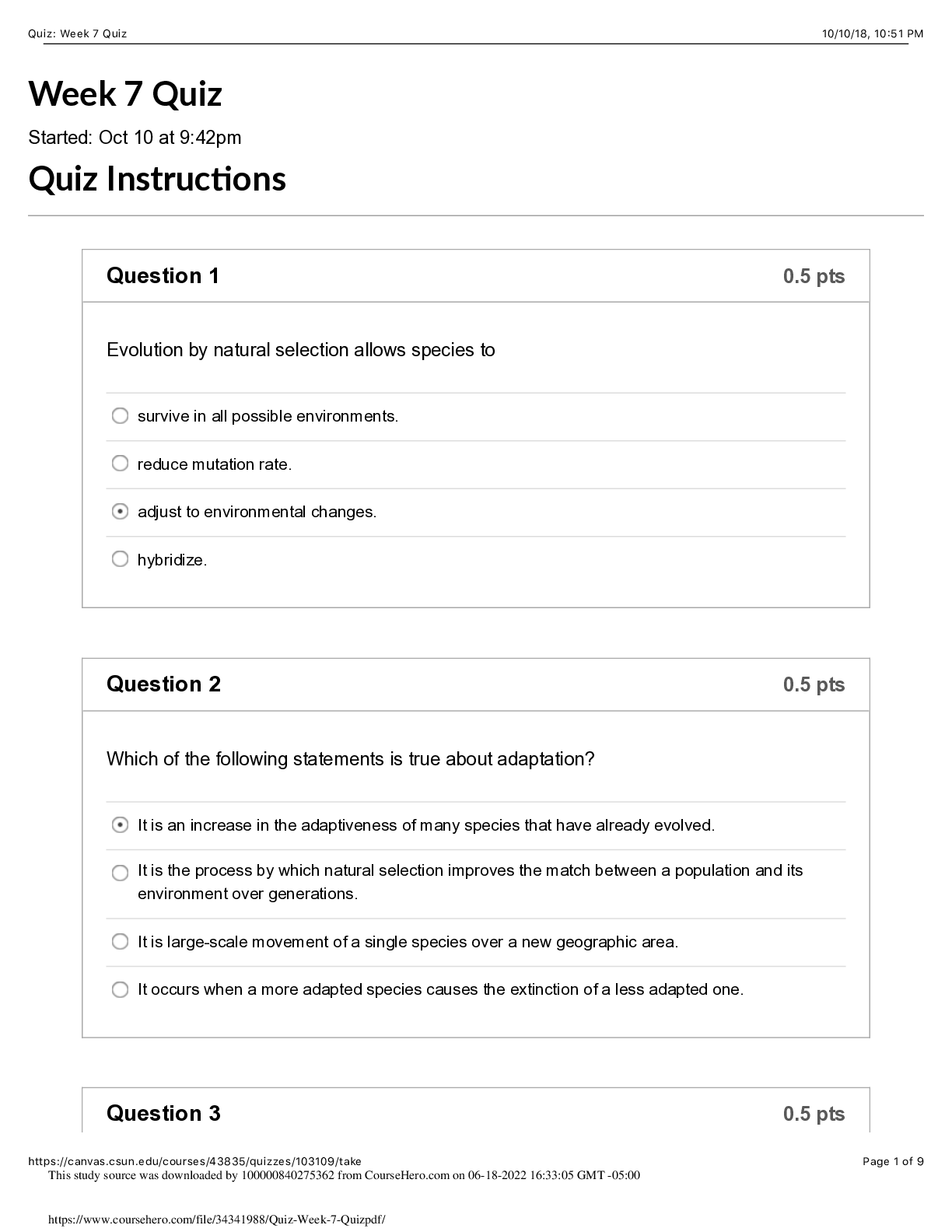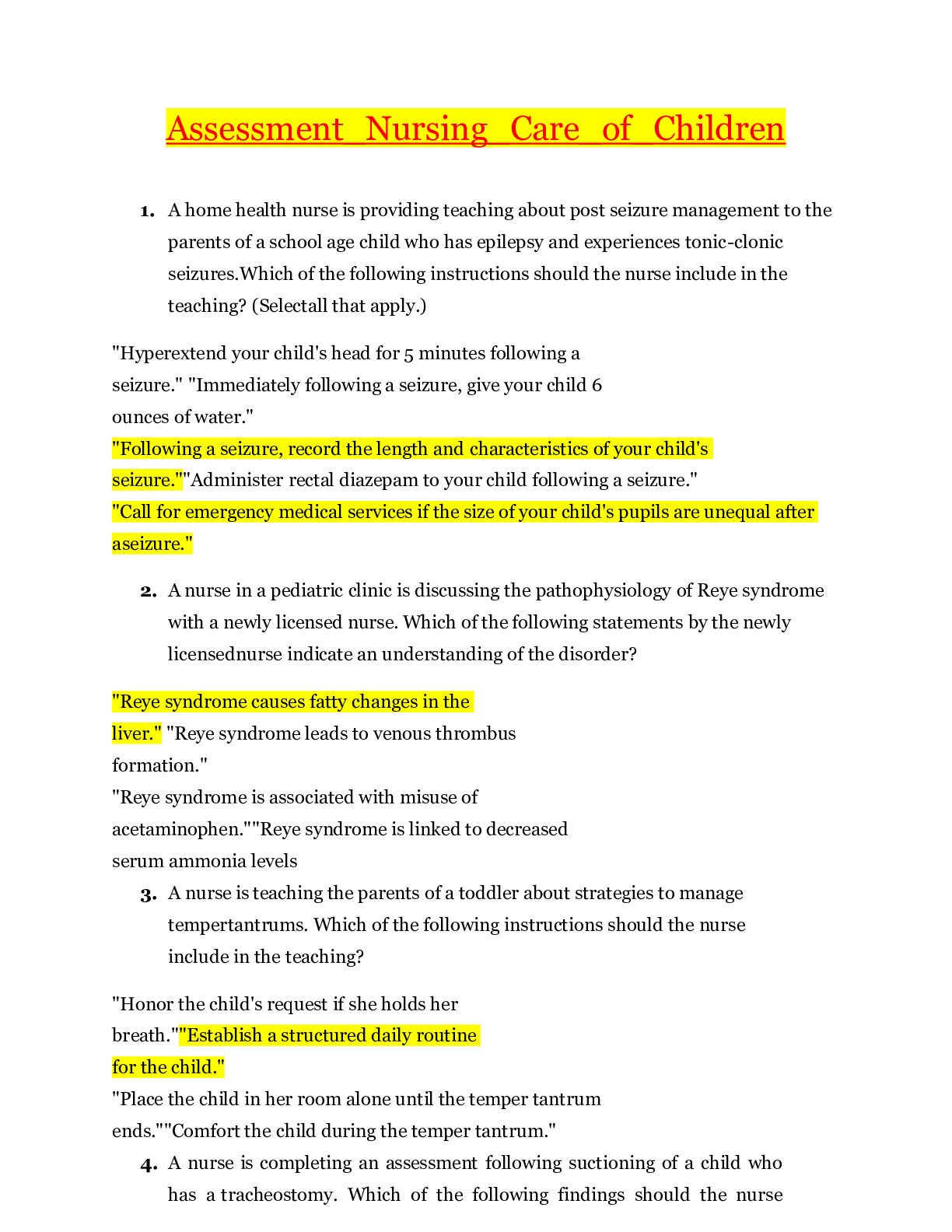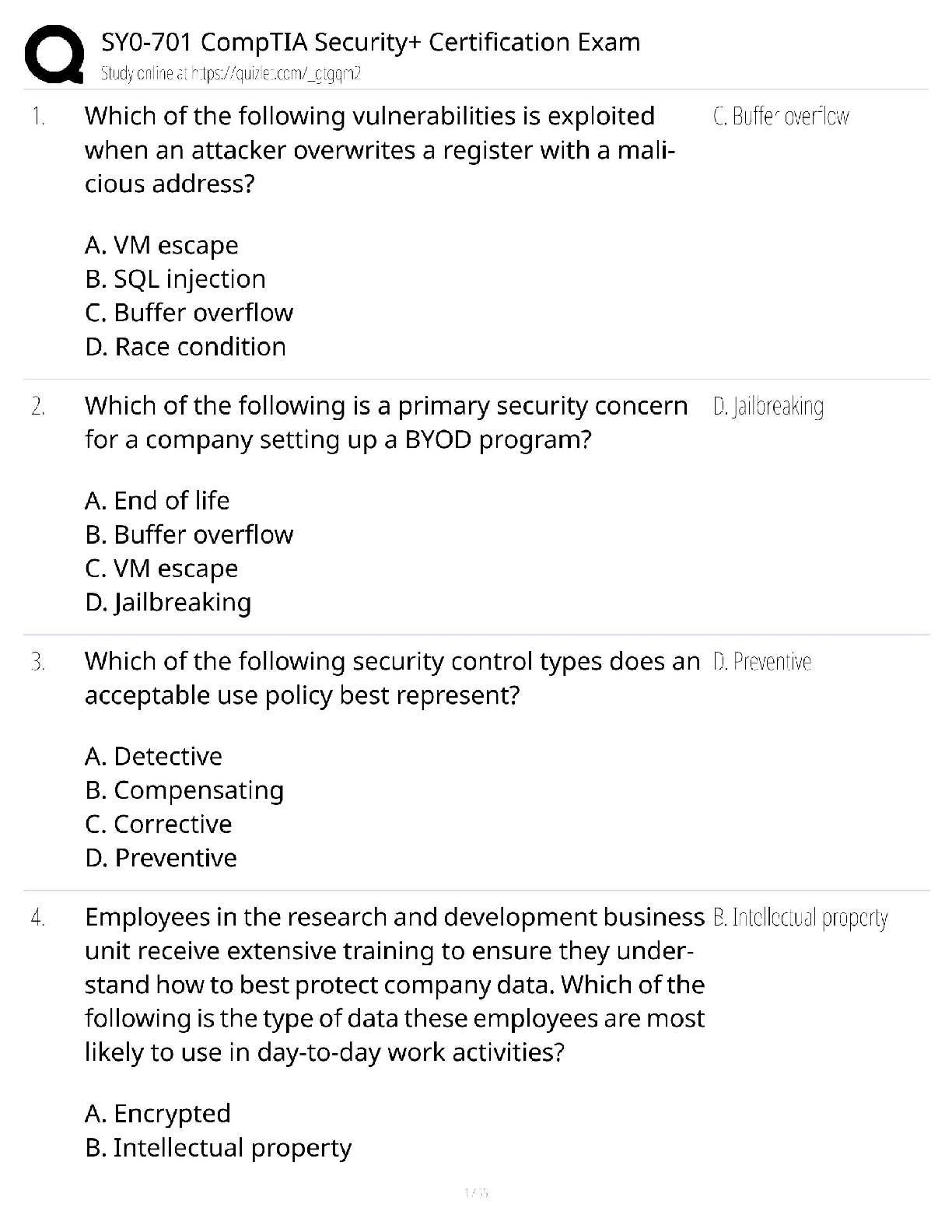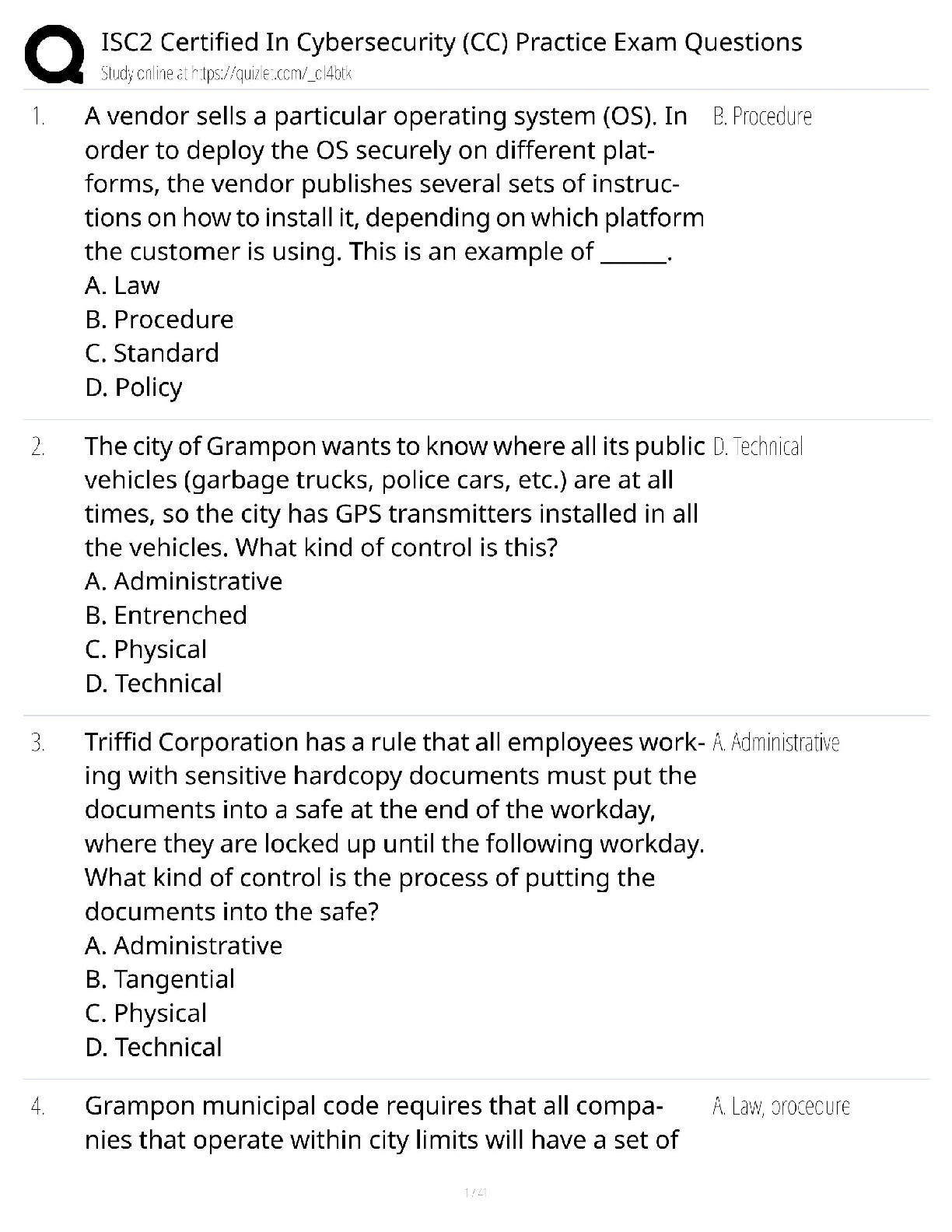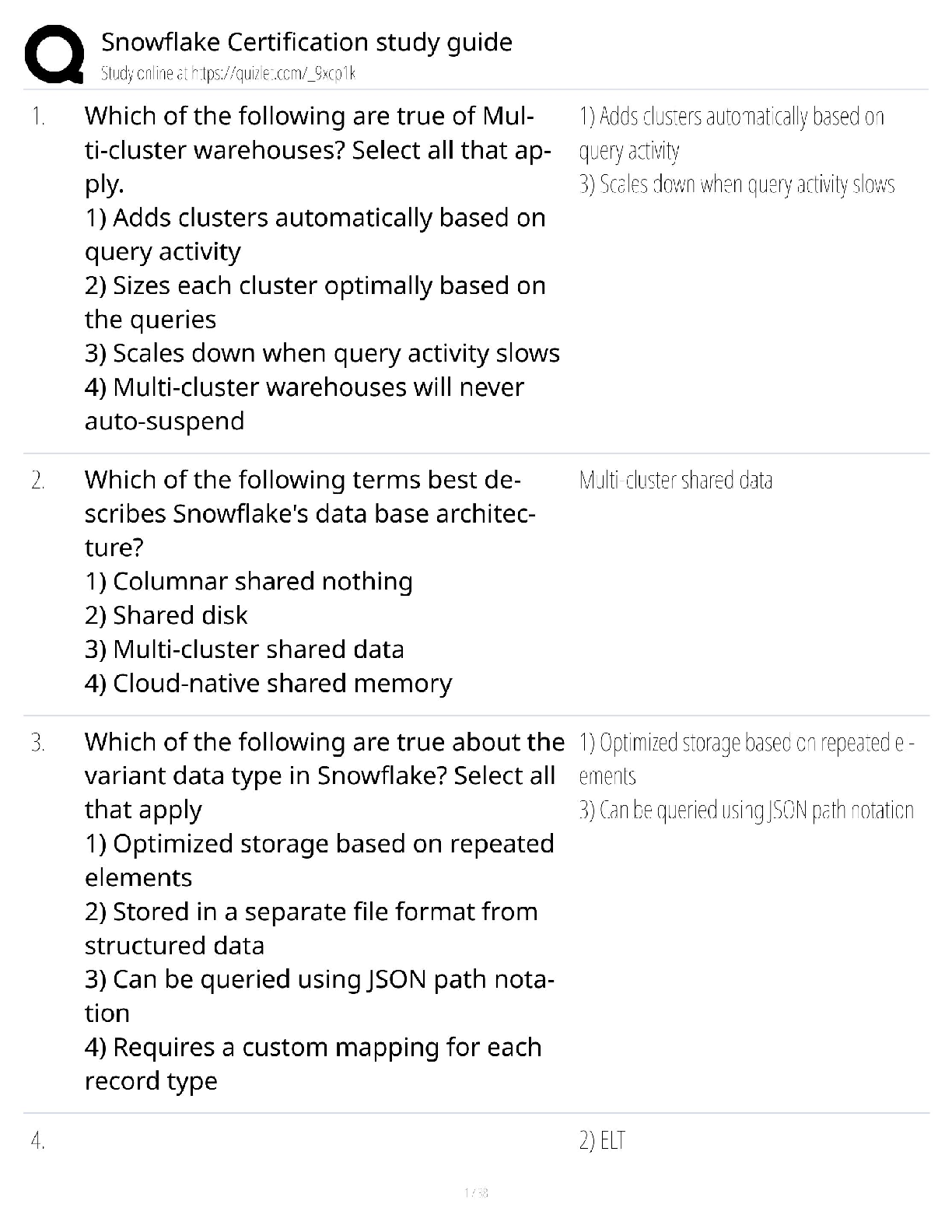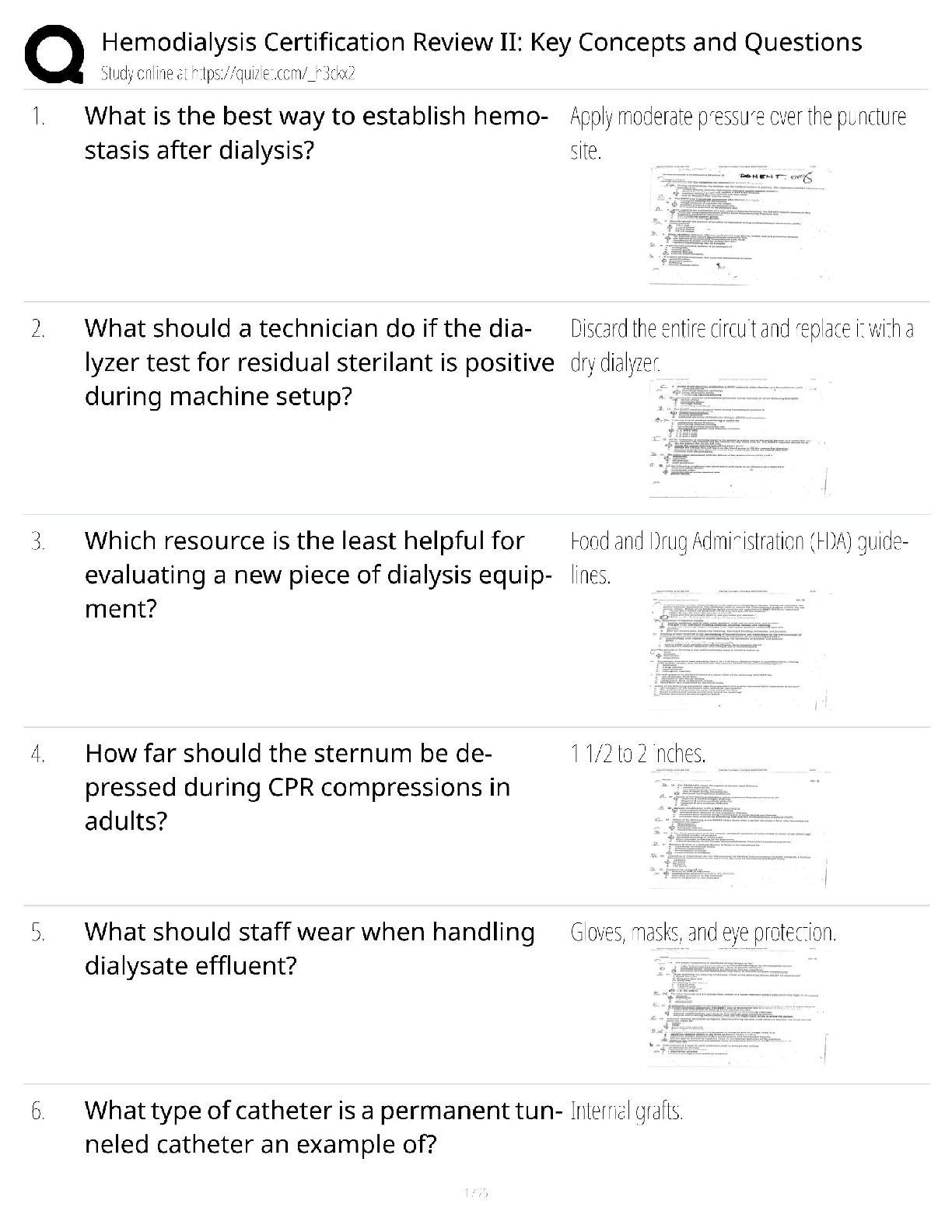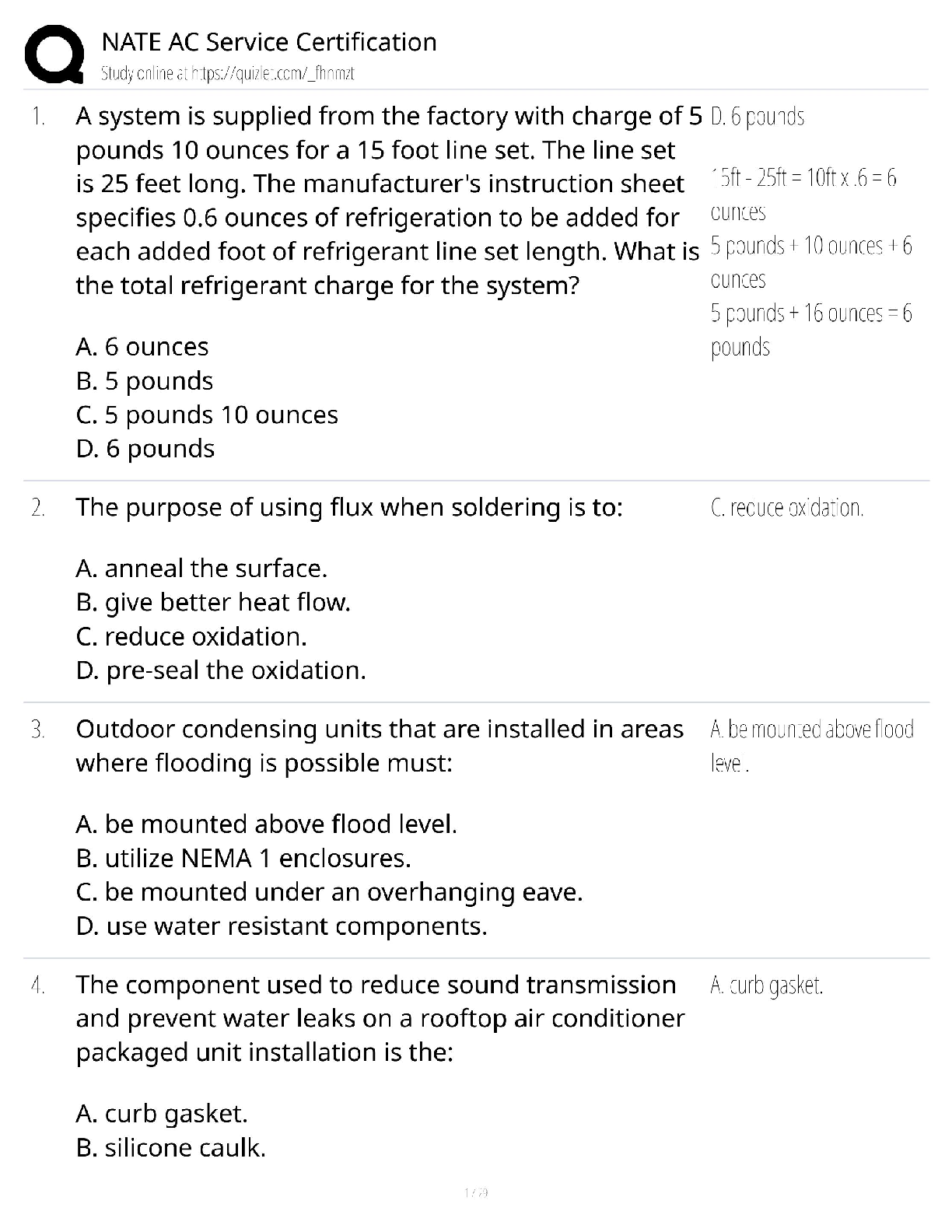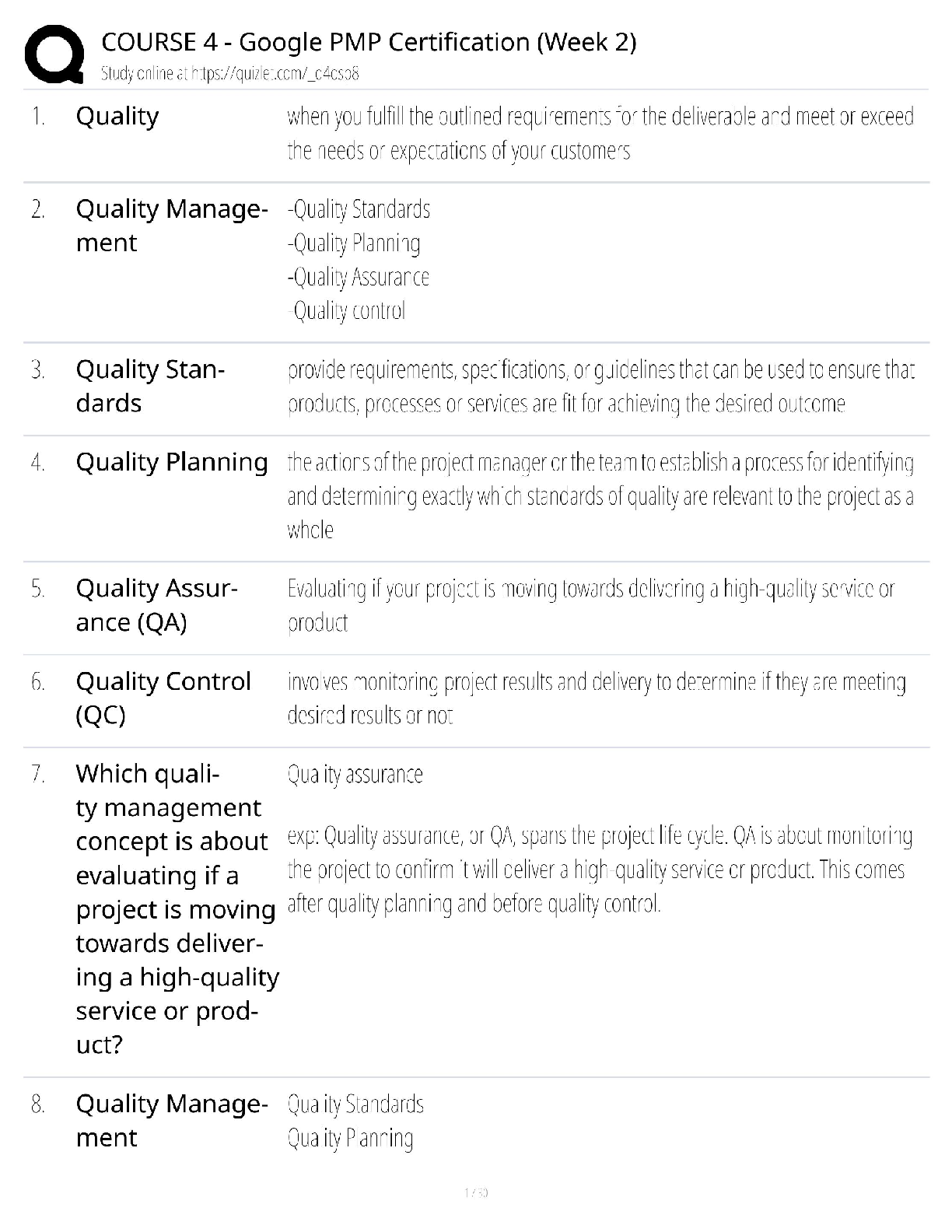merged_answers_rationales_Patho
Document Content and Description Below
uestions 1 & 2 below refer to the following situation:
A 55-year-old man with emphysema (a type of chronic lung disease) who has smoked 2 packs of
cigarettes per day for 40 years is hospitalized for
...
acute onset of cough productive of bloody
sputum (sputum=secretions from deep in the lungs). After a few days of testing and treatment,
the patient’s nurse reads a physician’s note on the chart: “I have told the patient that the
etiologies of his hemoptysis are: 1) exacerbation of his chronic emphysema and 2) the new
diagnosis of lung cancer. The onsets of both were contributed to by his longstanding smoking.”
1. The patient asks the nurse for more information. Which of the following explanations to
the patient best indicates a full understanding of the patient’s situation?
a. “You have a disease process that was iatrogenically caused by cigarette smoking.”
Incorrect: “iatrogenically” means caused by a medical person.
b. “You have a sudden onset of a chronic lung disease that was brought on by lung
cancer.” Incorrect: the chronic lung disease was part of the medical history of the
patient; the term “chronic” means a long-standing disease, not a “sudden onset.”
c. “The coughing up of blood is caused by a worsening of a disease you’ve had for a
long time plus a new problem-- lung cancer.”
d. “These diseases have been creeping up on you for probably 20 years; it just goes to
show that you should never have taken up smoking.” Incorrect: no evidence in the
scenario to support this sentence. (Besides, it sounds very judgmental.)
2. Based on all the information you have on the patient, which statement is most likely
correct?
a. The patient has a poor prognosis because of the comorbidities of lung cancer and
cigarette smoking. Incorrect: Smoking is a risk factor not a disease that would fit
the term “comorbidity.”
b. Lung cancer was a sequela of the bloody sputum. Incorrect: the bloody sputum
was part of the S&S of cancer; this answer implies the bloody sputum caused the
cancer.
c. A precipitating factor for the acute hospitalization was overexertion when the patient
started an exercise class. Incorrect: no evidence in the scenario to support this
sentence.
d. Heavy cigarette smoking was a risk factor in the patient’s developing emphysema
and lung cancer.
ANSWERS & RATIONALES to ASSIGNMENT #1
(Basic Concepts of Pathophysiology & Implications for Nursing, Genetic Influence, Intracellular Functions)
Academic honesty reminder: It is ok to discuss the assignments with other students as a learning tool, but it is
considered a breach of academic honesty to copy answers directly from each other.
Also, when taking a test, do not have this or any other informational document visible.
2
Questions 3 & 4 refer to the following situation: An 80-year-old patient is in shock from loss of
blood following an accident. His vital signs are: BP 80/50 (normal ~ 120/80), HR 120 (norm =
60-100), RR 20 (norm = 12 to 20), T 98.6 (norm ~ 98.6).
3. In assessing this patient, the nurse understands that the abnormal HR is
a. probably the etiology for the patient’s low BP. Incorrect: the shock is due to the
“loss of blood.” A state of shock has a “big picture” of low BP, high HR, cool hands,
weakness, feeling faint, and/or passing out. In this context the high HR doesn’t
CAUSE the low BP.
b. due to the patient’s heart compensating for low blood volume by pumping faster.
c. the normal compensatory response of shunting blood volume to the periphery.
Incorrect: shunting blood to the periphery IS a compensatory response, but it is a
“co-response” with high HR; one doesn’t cause the other.
d. due to multiple risk factors. Incorrect: no evidence in the scenario to support this
sentence. (TIP: when you are deciding on answers, plug them each into the stem
of the question & ask yourself if it makes sense. Ex—does this sentence make
sense? “In assessing this patient, the nurse understands that the abnormal HR is
due to multiple risk factors.” Hopefully you see that no, it doesn’t make sense.)
4. The patient would also most likely have all of the following EXCEPT
a. S&S of cool feet and hands from the body’s compensatory response to shock.
b. S&S of feeling faint and weak from blood loss.
c. a risk factor of shock. In an except question, remind yourself that 3 things go
together. The 4th one is the one you choose—it doesn’t fit.
d. a more guarded (ie, “poorer”) prognosis because of his age.
5. A young, otherwise healthy patient is admitted to the hospital with a diagnosis of heart
failure of unknown cause. The etiology of the heart failure would be termed
a. iatrogenic.
b. idiopathic.
c. nosocomial.
d. acute.
6. To do well in this course, a student should
a. memorize the notes thoroughly. Incorrect: memorize only a few things that are
unavoidable. Otherwise, study concepts and contexts!
b. be able to apply concepts to different situations.
c. begin each assignment Wednesdays at 7am. Incorrect: you should begin and try to
finish assignments way before an hour before they are due!
d. hurriedly take tests one hour before their stop-time. Incorrect: you should begin
and finish tests way before an hour before they are due!
Questions 7-10 refer to the following situation A 55 year old male is in the ER having a myocardial infarction (heart
attack, AKA “M.I.”), which is caused by coronary arteries that are clogged with fat and narrowed so that not enough
oxygen–rich blood is getting to his heart. He admits that his daily nutrition is poor, consisting mainly of high-fat fast
food. He has a family history of cardiac disease-- his father had a heart attack at age 46. The patient is obese and is
a heavy cigarette smoker-- 2 PPD (packs per day). The patient said he had decided to take up jogging today and
after a few minutes began having chest pain, nausea and shortness of breath. He went to the ER and was noted to
have profuse diaphoresis (heavy sweating), tachycardia (rapid heart rate), and significant changes on his
electrocardiogram (ECG or EKG). The patient recovers from this acute heart attack but his heart is so damaged that
subsequently he has many episodes of congestive heart failure and many hospitalizations.
3
7. Without even having further knowledge of course material related to MI’s, you can tell a lot
about the scenario from careful reading and knowledge of basic patho verbiage. Example:
The paragraph above suggests that the direct pathophysiologic etiology of the heart attack
(MI) is most likely related to
a. not eating green vegetables. Incorrect: not eating nutritiously is not a DIRECT patho
etiology; we do have a hint that he has a risk factor of eating unhealthily (fast food),
but don’t “overthink.”
b. congestive heart failure. Incorrect: heart failure is a sequela in this context.
c. lack of oxygen that narrows the coronary arteries. . Incorrect: the scenario tells
you that the MI is “caused by coronary arteries that are clogged with fat and
narrowed so that not enough oxygen–rich blood is getting to his heart.” It doesn’t
say that oxygen causes the narrowing, which is what this answer says.
d. oxygen not reaching tissue that is distal to narrowing of the coronary arteries. See
sentence above… also, you are asked to use the knowledge from the RRD about
what the term distal means. (See top of page 5 of RRD 1 for reviewing that info)
8. In reading the paragraph above, it is easy to find 4 risk factors—things that “set the stage”
for this patient to have a heart attack. They include all the following EXCEPT
a. being a heavy cigarette smoker.
b. having profuse diaphoresis. This is the correct choice, because it is one of the
S&S, not a risk factor.
c. a parent with heart disease.
d. high-fat diet.
9. Which mini-concept map do you think best describes accurate linkage between underlying
pathophysiology and signs and symptoms (S&S) described in this scenario?
a. Jogging increased heart rateàblood pumped throughout body fasteràtissues
(including lungs and stomach) receive too much bloodàpatient complains of
shortness of breath and nausea. Incorrect: there is nothing about this situation that
implies that “too much blood” is being pumped to the organs.
b. History of heart disease in familyàpatient worries about it constantlyàbecomes
anxiousàsmokes too muchànicotine causes narrowing of all arteries in body,
including coronariesàheart attack from narrowed coronaries.
c. High levels of fat in the blood from high-fat dietàclogs in coronary arteries develop
over time àoxygenated blood cannot get to distal tissues of heartàunoxygenated
tissues “cry out” (send pain messages to brain) à patient complains of chest pain.
d. Obesityà increased pressure on diaphragmàbreathing becomes more
difficultàshortness of breathàless oxygenà EKG changes.
Note: Part of the key to understanding patho material and doing well on tests is paying close attention to
the flow of the notes (RRDs) and then also these scenarios, as well as understanding what exactly the
questions are asking. Also, go through each answer and be sure you have a really good rationale for why
you chose the answer that you did and why you didn’t choose other answers.
4
10. A sequela of the MI was
a. having to be hospitalized frequently because of problems associated with the
damaged heart.
b. having to be hospitalized frequently with repeat heart attacks.
c. needing to jog more often.
d. continuing to smoke 2 PPD.
[Show More]
Last updated: 2 years ago
Preview 1 out of 74 pages

.png)
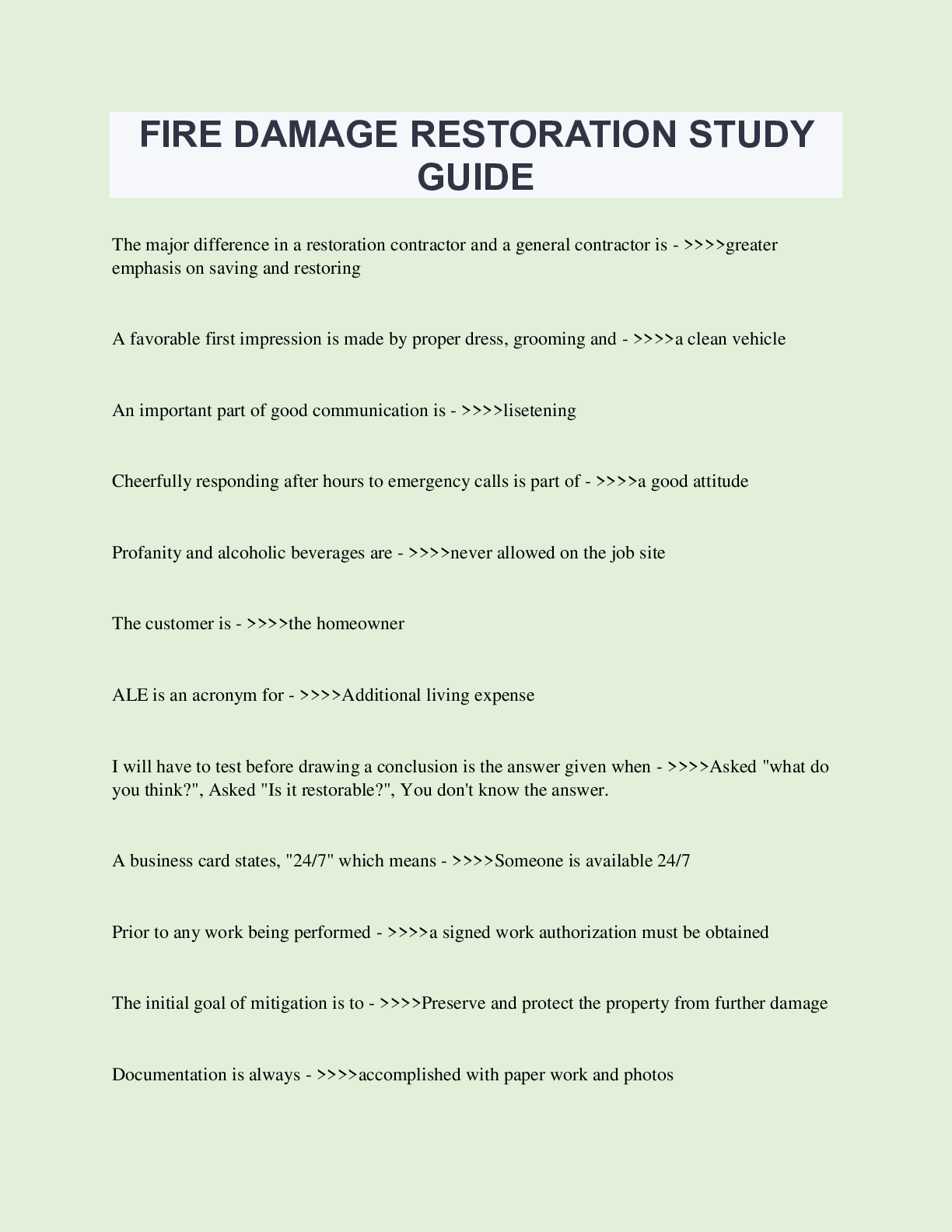
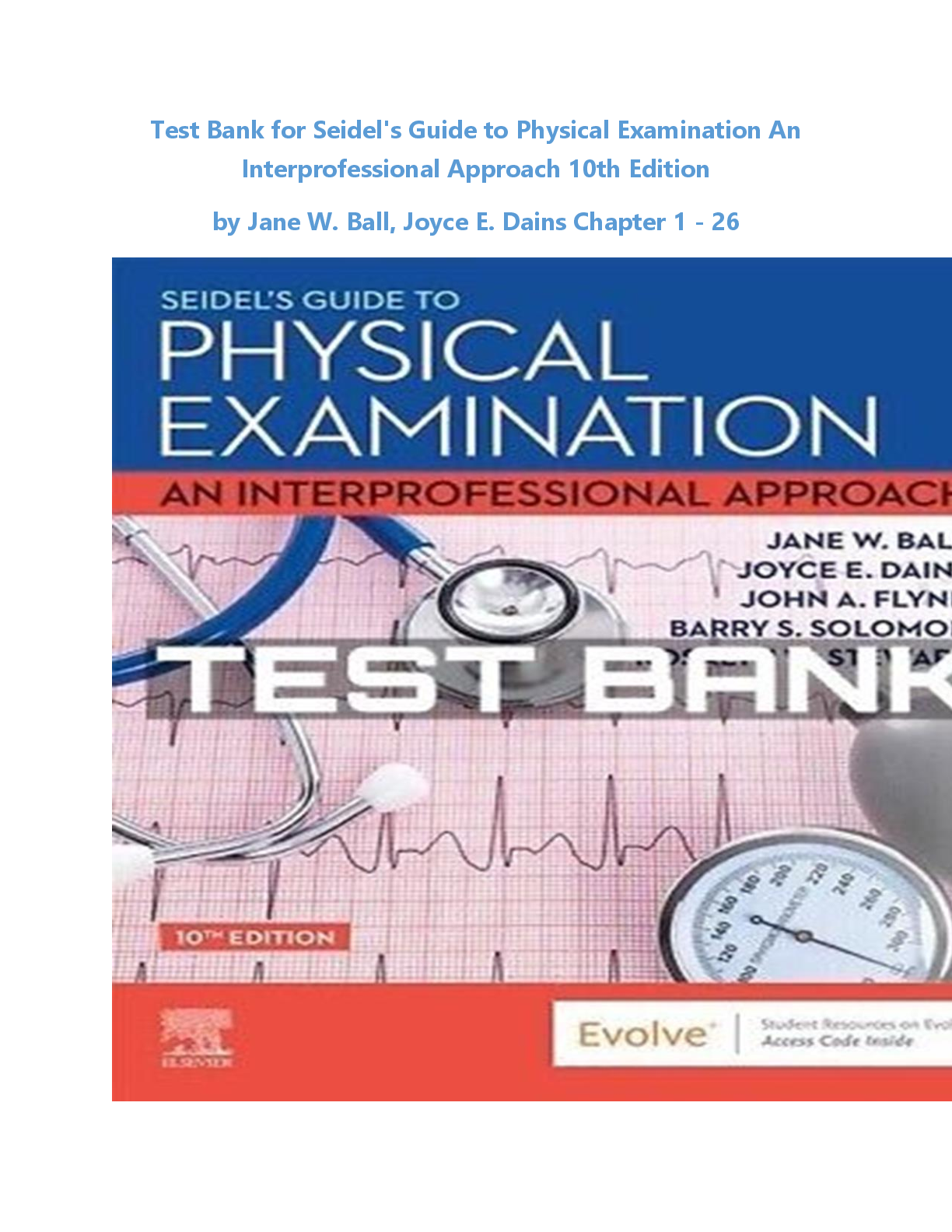


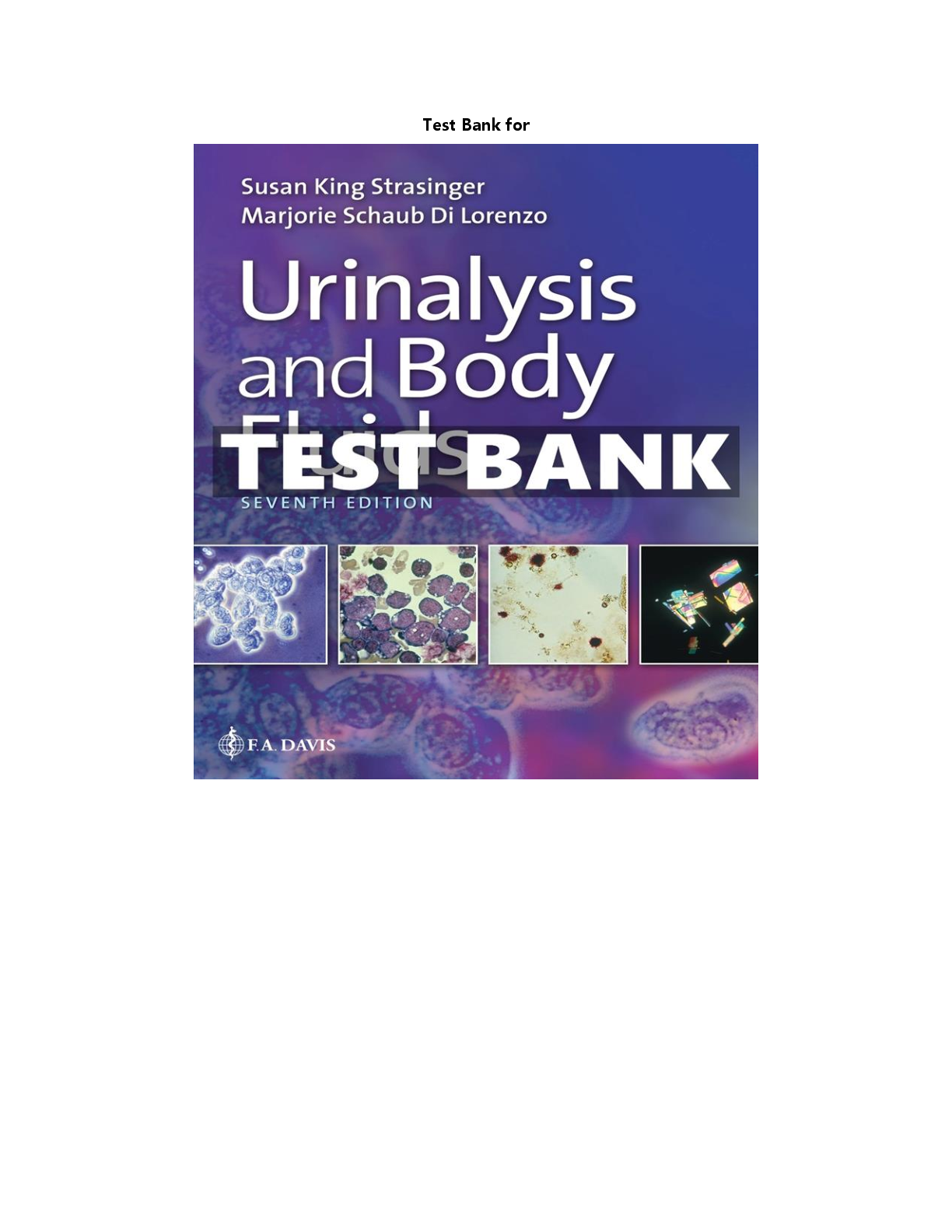
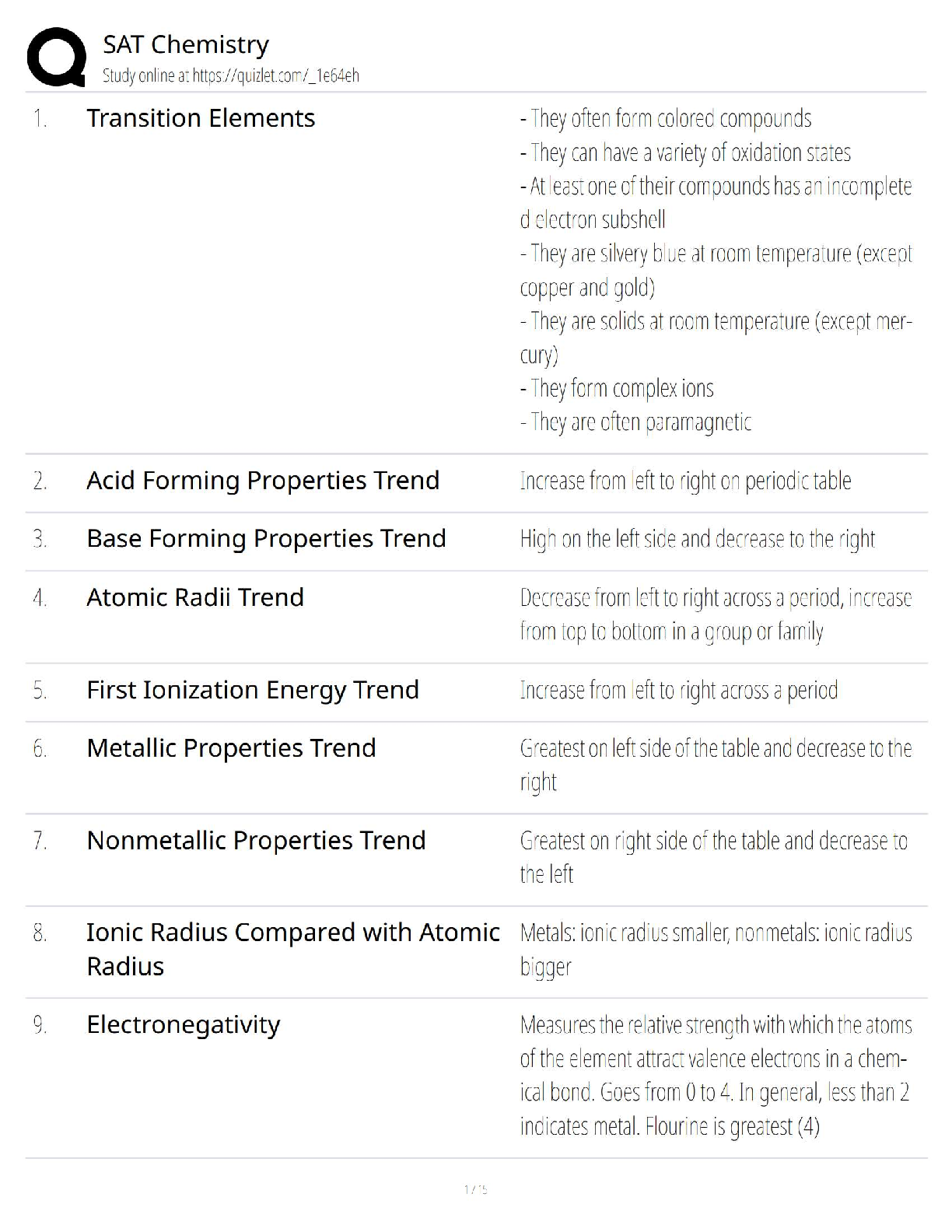

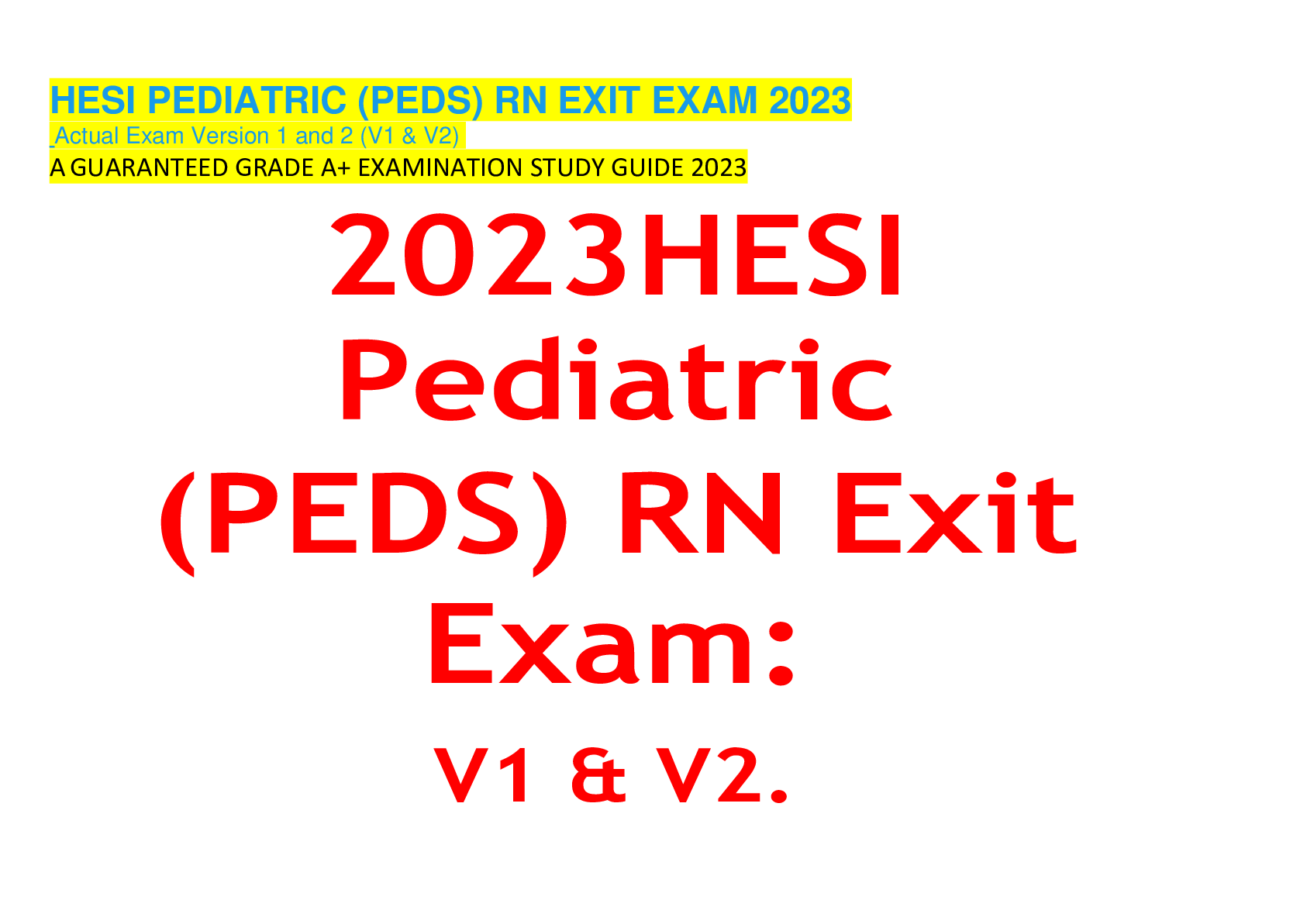

.png)


